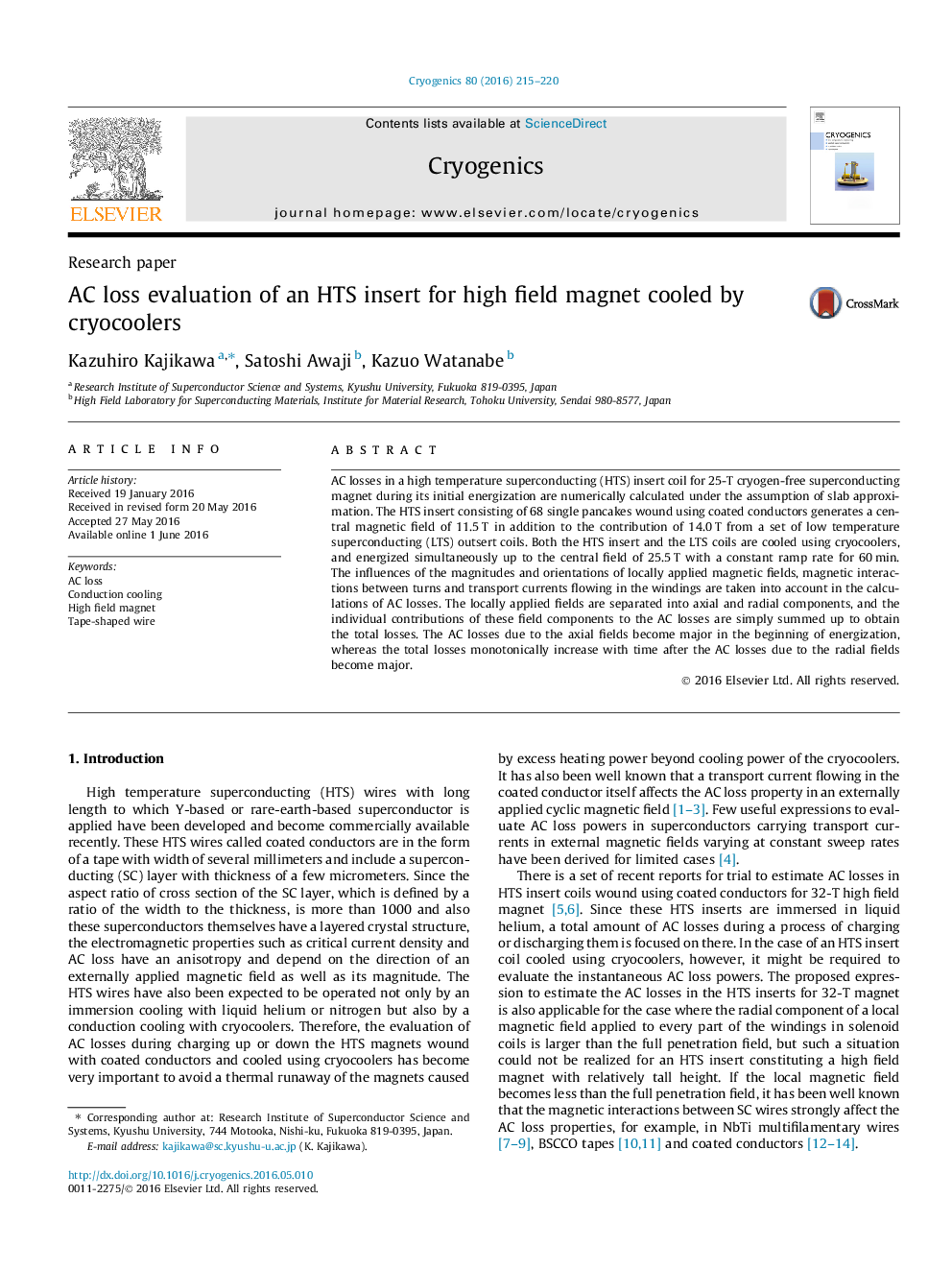| Article ID | Journal | Published Year | Pages | File Type |
|---|---|---|---|---|
| 5444207 | Cryogenics | 2016 | 6 Pages |
â¢The AC losses in the HTS insert for high field magnet during its initial energization are numerically estimated.â¢The slab approximation can be used for the parallel- and perpendicular-field losses in the axial and radial fields.â¢The perpendicular-field losses in the single pancakes have a good agreement with the numerical results using an FEM.â¢The influence of the transport current on the parallel-field losses in the HTS insert is negligible.â¢The total losses in the HTS insert almost monotonically increase with time.
AC losses in a high temperature superconducting (HTS) insert coil for 25-T cryogen-free superconducting magnet during its initial energization are numerically calculated under the assumption of slab approximation. The HTS insert consisting of 68 single pancakes wound using coated conductors generates a central magnetic field of 11.5Â T in addition to the contribution of 14.0Â T from a set of low temperature superconducting (LTS) outsert coils. Both the HTS insert and the LTS coils are cooled using cryocoolers, and energized simultaneously up to the central field of 25.5Â T with a constant ramp rate for 60Â min. The influences of the magnitudes and orientations of locally applied magnetic fields, magnetic interactions between turns and transport currents flowing in the windings are taken into account in the calculations of AC losses. The locally applied fields are separated into axial and radial components, and the individual contributions of these field components to the AC losses are simply summed up to obtain the total losses. The AC losses due to the axial fields become major in the beginning of energization, whereas the total losses monotonically increase with time after the AC losses due to the radial fields become major.
